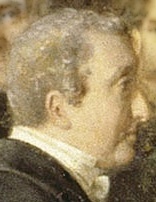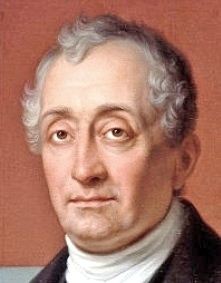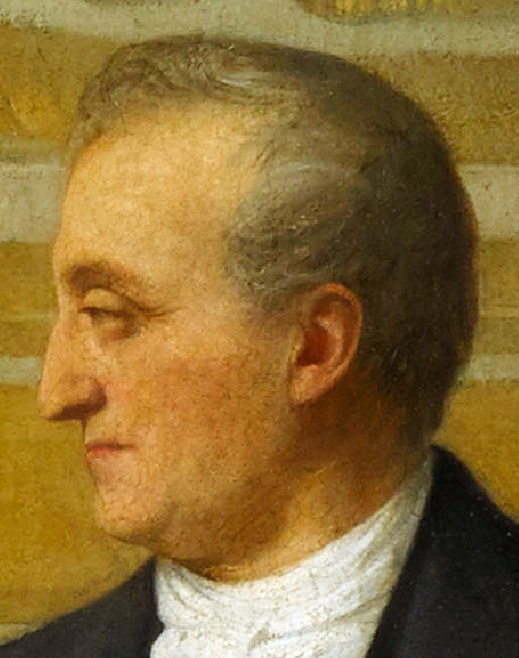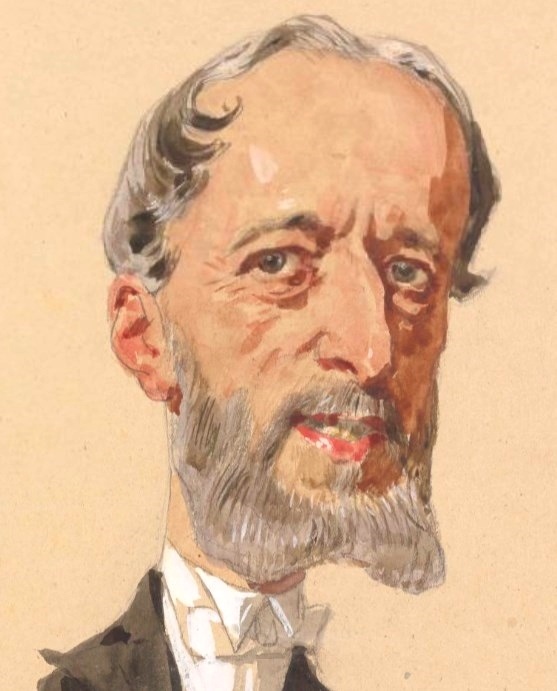Louis Tullius Visconti (1791-1853), Architect to the Emperor
1st image: Soirée; 2nd: by Théophile Vauchelet (1840s); 3rd: L'achèvement du Louvre, by Jean Baptiste Ange Tissier (1865); 4th: caricature by Eugène Giraud drawn in 1853 at de Nieuwerkerke's soirée.
"A surprise!" declared the Parisian newspapers when they spotted Louis Visconti in Soirée au Louvre at the 1855 Salon. The architect, known for his relentless work ethic—arriving at his office at seven in the morning and staying until sunset—had passed away from heart failure in December 1853. His physician had advised him to take some rest earlier that year, but Visconti ignored the warning, determined to complete his Grand Dessein (“Great Design”).
Since 1848, the restoration and expansion of the Louvre had been overseen by architect Félix Duban60. However, when Napoleon III visited the palace in early February 1852 with de Nieuwerkerke16, Viel-Castel43, and General Exelmans, Duban was absent. The emperor promptly dismissed him and appointed Louis Visconti in his place.
Born into an Italian family of archaeologists and architects, Visconti had already earned the emperor’s favor for his 1840 design of Napoleon Bonaparte’s tomb at Les Invalides. In 1849, he was named Architect of the Government at the beginning of Louis-Napoleon’s reign.
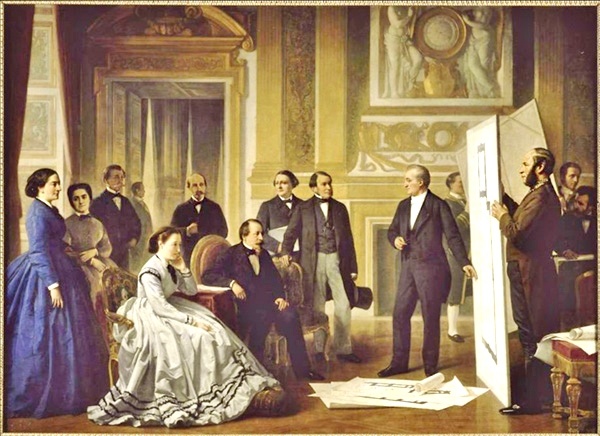
Well acquainted with Duban’s traditional plans, Visconti set out to create a more ambitious and magnificent design for the Louvre, which he outlined in his book L’Achèvement du Louvre. In it, he advocated for extending the designs and embellishments of the new wings—now recognized as the Second Empire style—onto the older Louvre façades for the sake of architectural harmony.
Napoleon III approved the proposal, and construction began in July 1853. Haussmann07 assisted Visconti with its execution, demolishing adjacent slums to make way for Visconti’s Grand Dessein. The redesigned Louvre was inaugurated in 1857.
In 1865, Ange Tissier painted the Achevement du Louvre, set in 1853. Several persons are also in Soirée au Louvre. Do you recognize them?
Note: The caricature by Giraud in 1853 depicts Visconti with a beard. However, a death mask taken by Biès that same year shows he had long sideburns but no facial hair on his chin. Painter Biard likely added Visconti posthumously, using earlier depictions as references, such as Vauchelet's painting.
